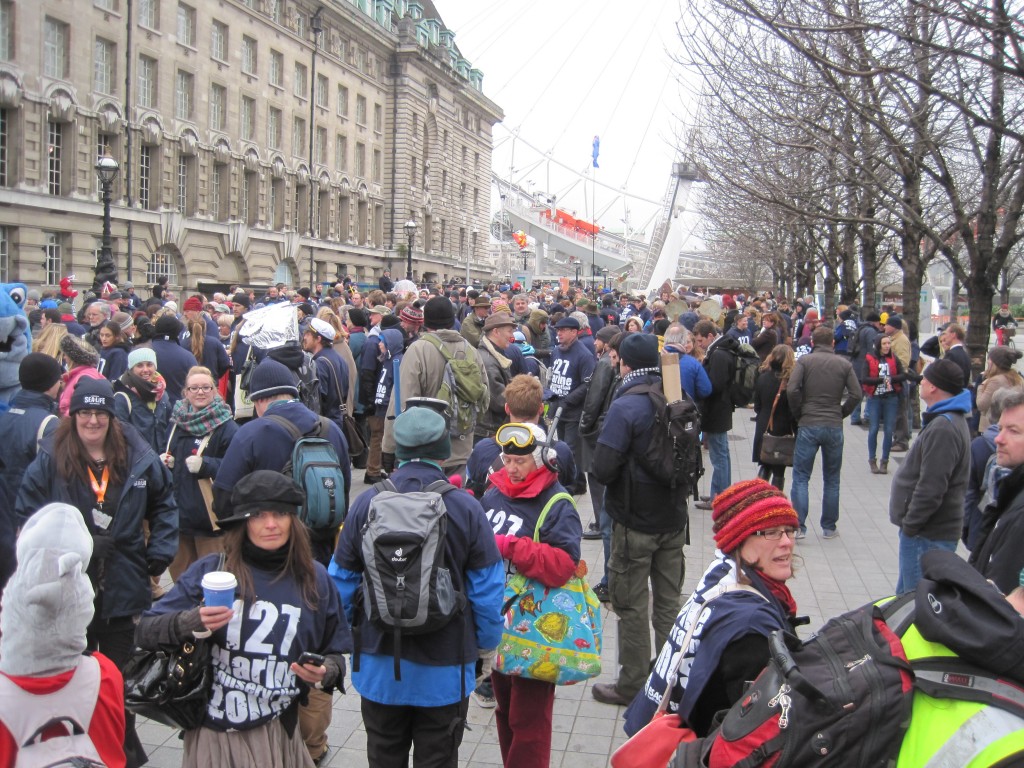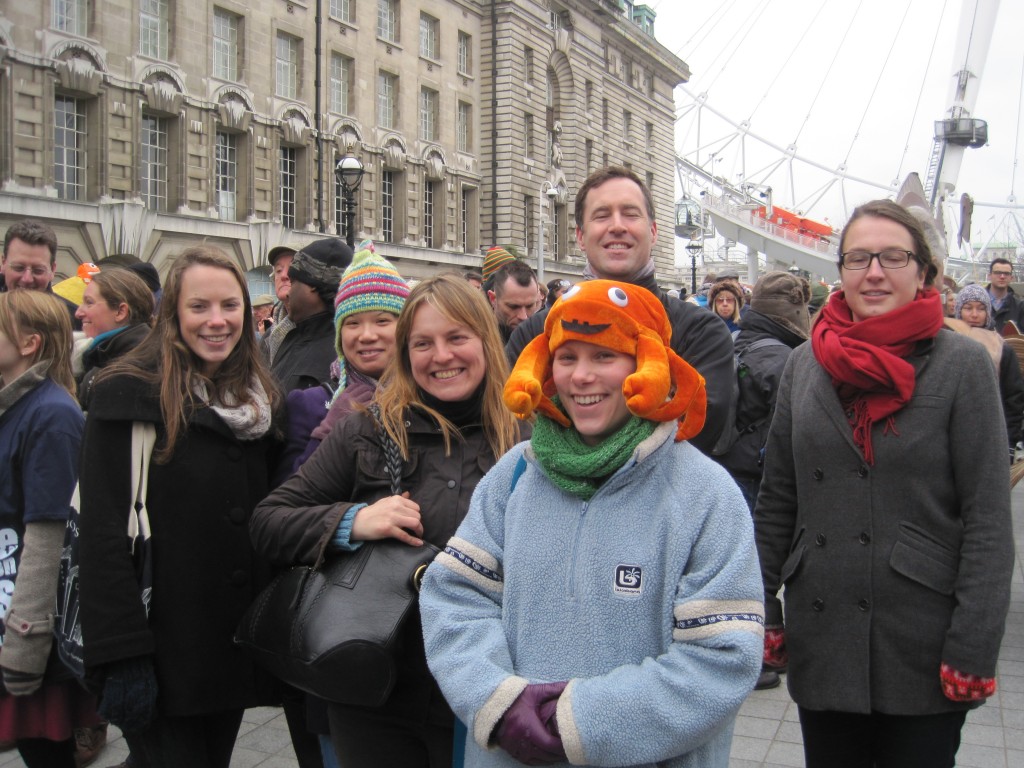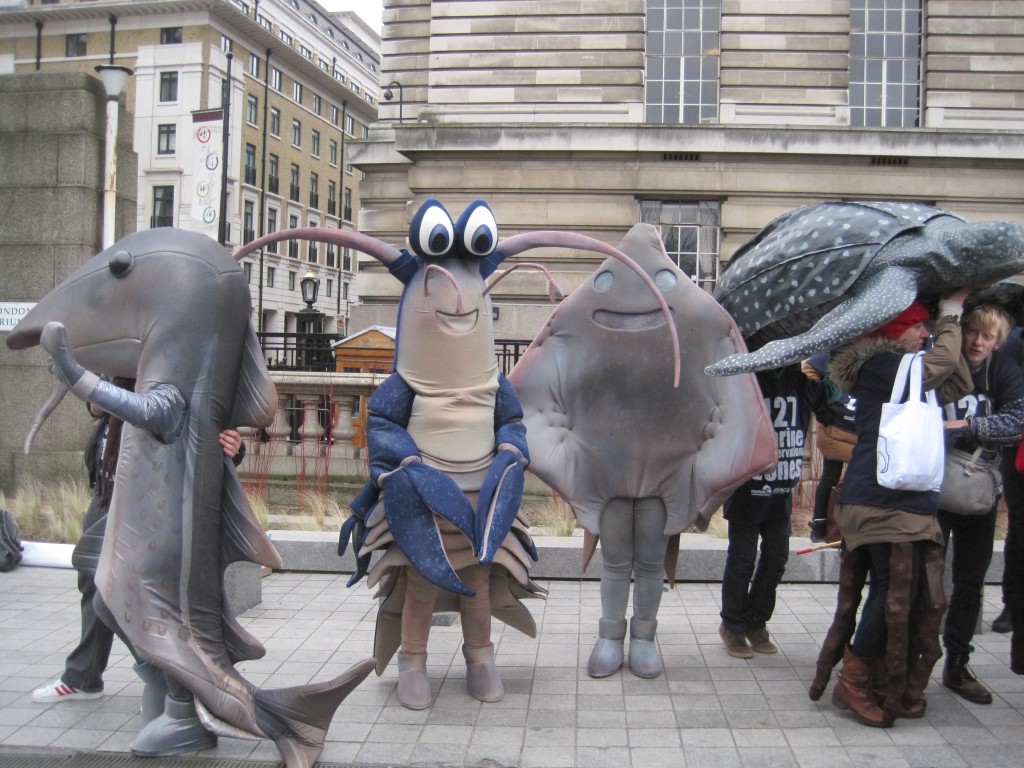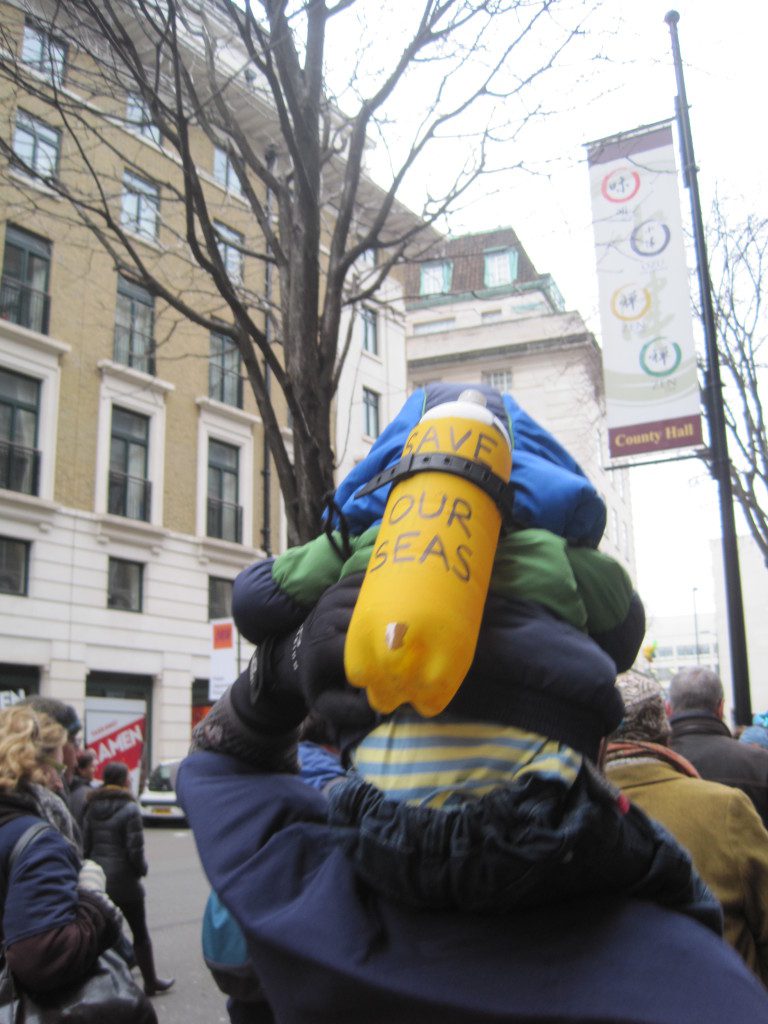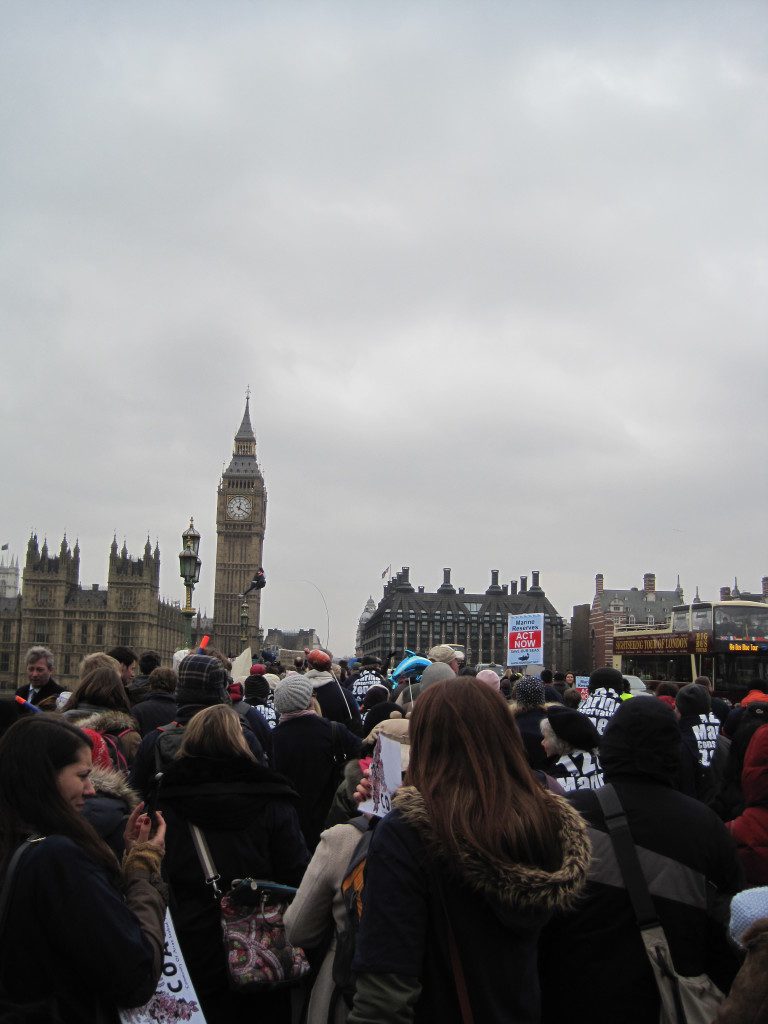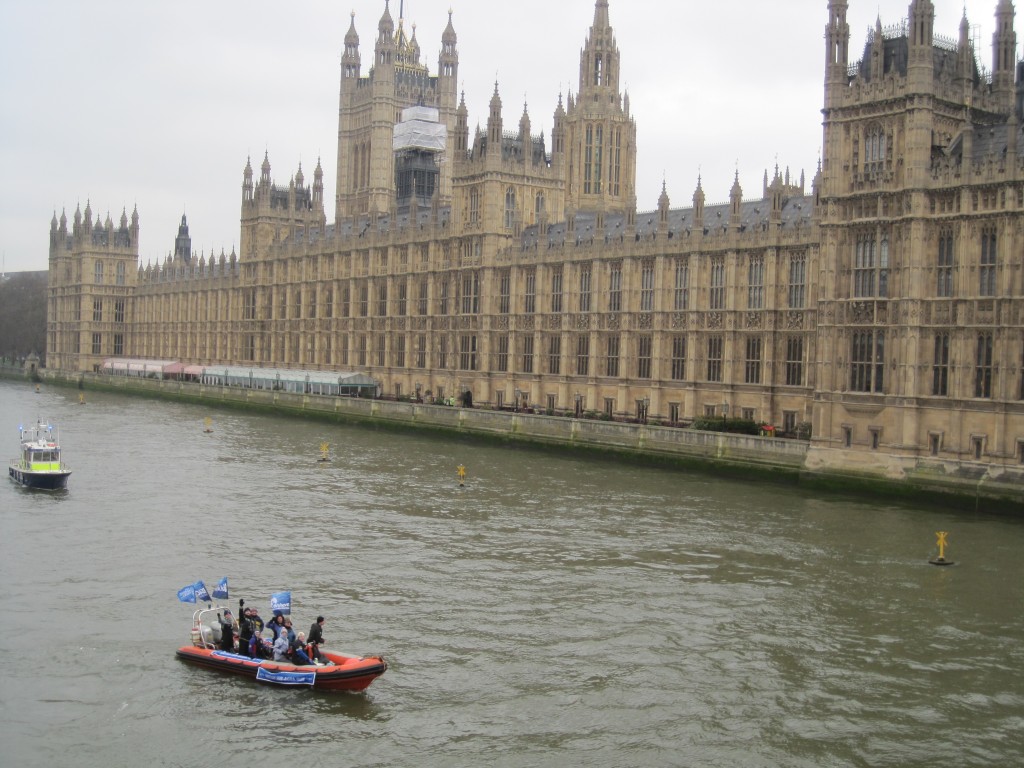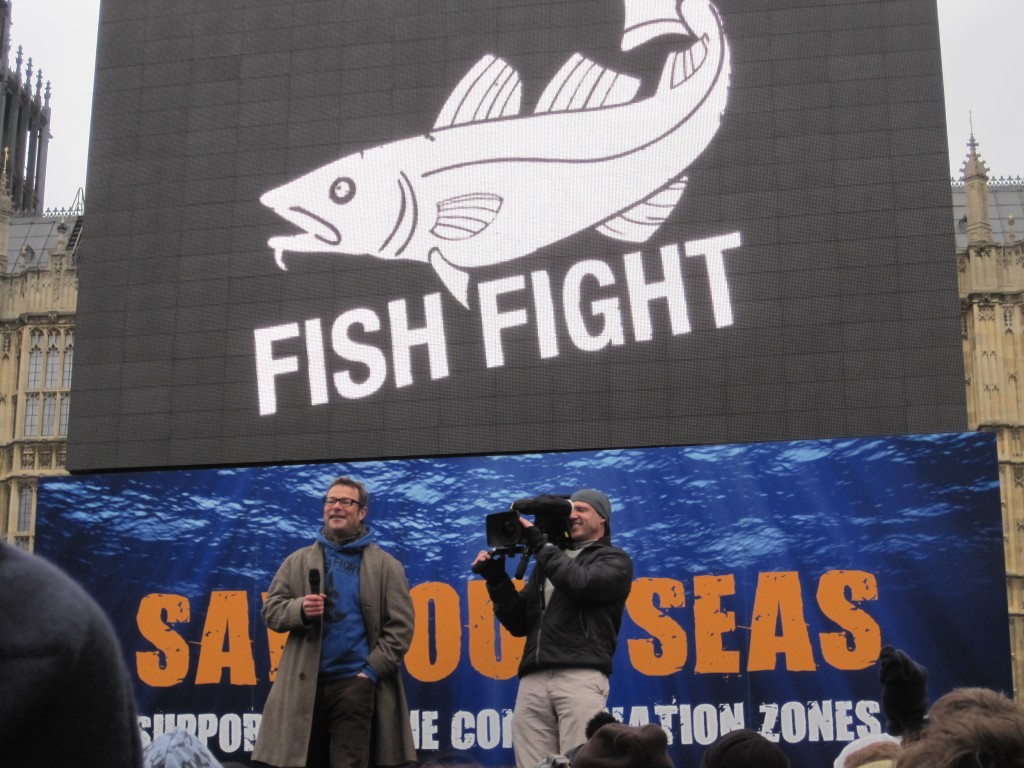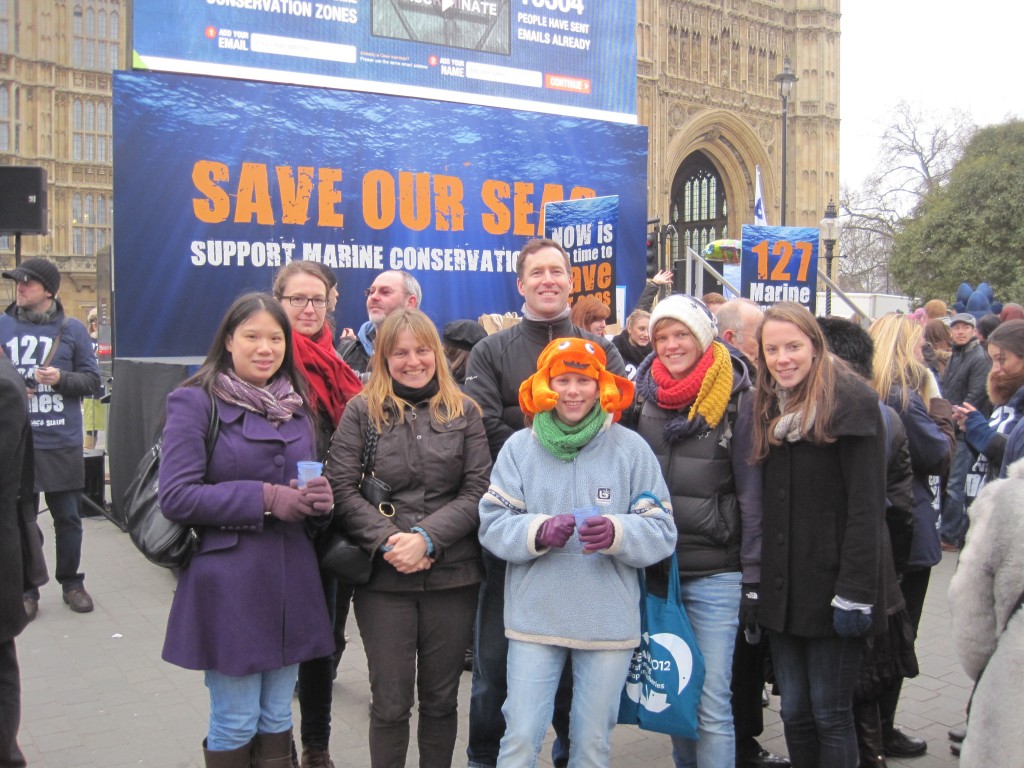by Jo Hudson, Conservation & Research Assistant, London
On Monday 25th February, the BV London team wrapped up warm and prepared to brave the freezing winter’s day in order to join the thousands of people who were marching on parliament to rally for more marine conservation zones in England. To those outside the UK (and to be honest probably some of you Brits too) may be wondering, just what the heck are Marine Conservation Zones (MCZs)? To fully explain them, and the situation I need to give a brief history lesson.
Back in 2004, it was proposed that 30% of the UK’s waters should become reserves in which no fishing or any other kind of extraction should occur. However, today only 0.01% of the UK’s waters are protected. That’s the total area of British waters – a grand total of 5 km2 – in which no industrial fishing is permitted. All this was supposed to change after the British government launched an intensive stakeholder-led consultation in 2010, to choose which sites should be designated as MCZs in the UK. MCZs are a form of marine protected area (MPA) which will conserve areas which are of special biodiversity importance; contain rare or threatened species and/or habitats; contain species and/or habitats that are representative of biodiversity in British seas.
After a lengthy 18 month process of negotiations, a network of 127 MCZ sites were selected for England (there are separate consultations for Wales, Northern Ireland and Scotland), encompassing a broad spectrum of marine ecosystems including mussel and seagrass beds, cold-water reefs and saltmarshes. These MCZs would protect our oceans and ensure a healthy and productive marine environment by controlling the activities that damage our seas. Regrettably, the UK government is choosing to ignore the recommendations of the independent scientific panel, and reduce the number of MCZs designated in 2013 to just 31, with no further date for when the remaining 96 will be considered. Many of the remaining sites are considered extremely high priority Biodiversity Action Plan (BAP) habitats, and are under threat from destructive activities.
This is why on Monday 25th February, we joined Hugh’s Fish Fight, the Marine Conservation Society, SeaLife, BSAC and the thousands of marine champions, and marched to parliament to show the government how much support there is for more marine protection in England. There was definitely a festival atmosphere (as you can see from the photos) and people embraced the fancy dress theme to dress up as lobsters, fish, pirates, divers and even jellyfish!
At midday the enthusiastic crowd, led by celebrity chef and campaign frontman Hugh Fearnley-Whittingstall, made our way to parliament. It was a slow and definitely cold march, but was kept lively by chanting and admiring all the different costumes. We arrived in The Old Palace Yard opposite the Houses of Parliament in Westminster just before 1pm where the crowd amassed before a big screen and stage, waiting for the speech by Hugh.
We were not disappointed, Mr Fearnley-Whittingstall did a rousing speech talking about the importance of the campaign, how we can help to change the decision and thanking everyone for making the effort to come and support the cause! The representatives from the MCS, BSAC and SeaLife also made speeches before the crowd slowly dispersed. The London team left feeling full of fighting spirit and not a little cold!
The response to the FishFight campaign has been phenomenal. When the last episode of the series was shown on Channel 4 3 days after the march more than 38,000 tweets were sent to British supermarkets in regards to how they sourced their prawns. The supermarkets have all responded, see what they wrote here. However, there is still a lot of work that needs to be done, including taking part in the public consultation on MCZs. For more information on how you can get involved please use the links below.
- Take part in the public consultation and send an email to DEFRA showing your support for the cause (deadline 31st March) by using this link.
- Watch this video by the MCS on why the 127 MCZs are so important.
- A comment piece by George Monbiot on this topic, click here.
- The official DEFRA MCZ consultation page, click here.


